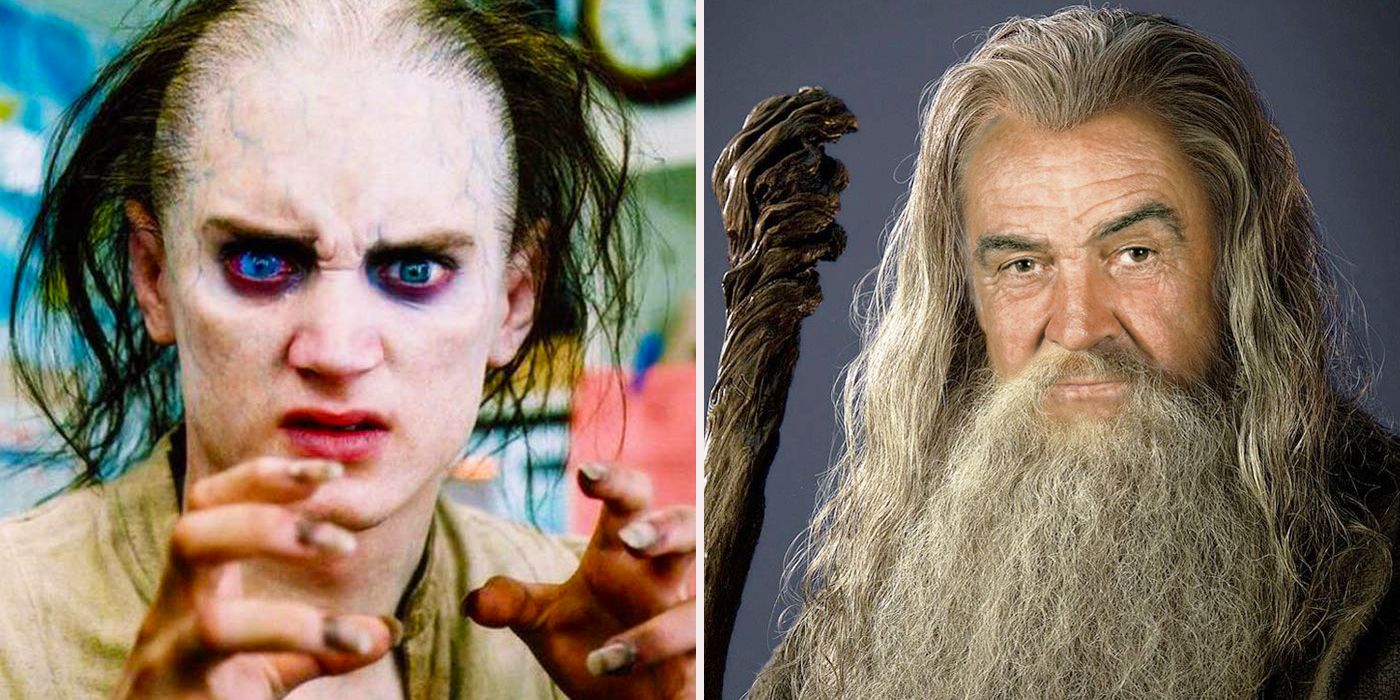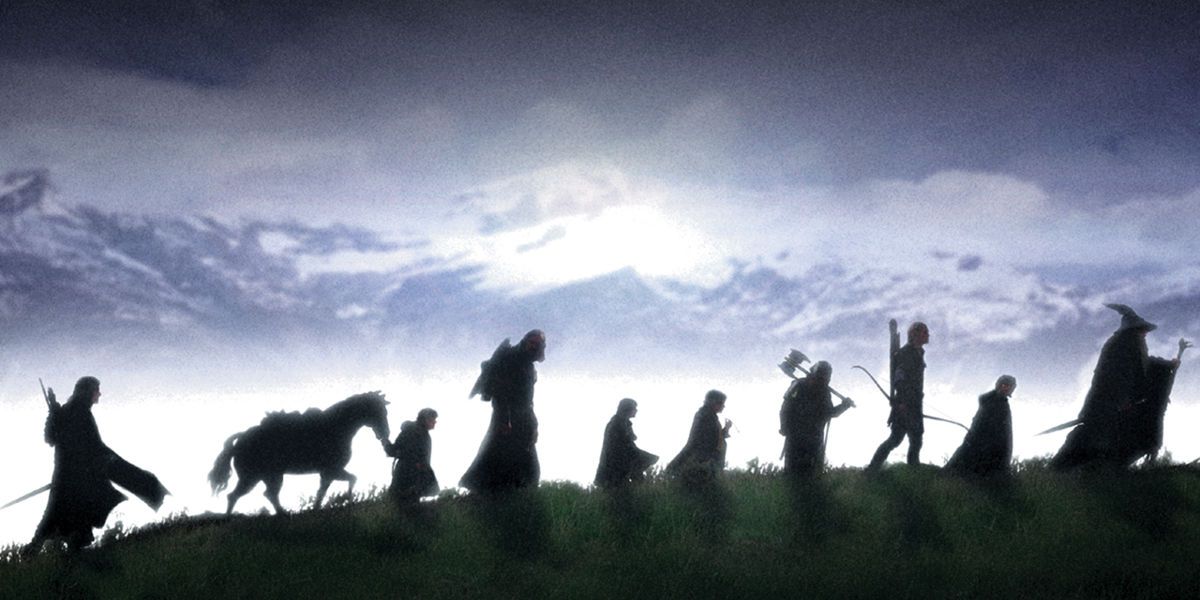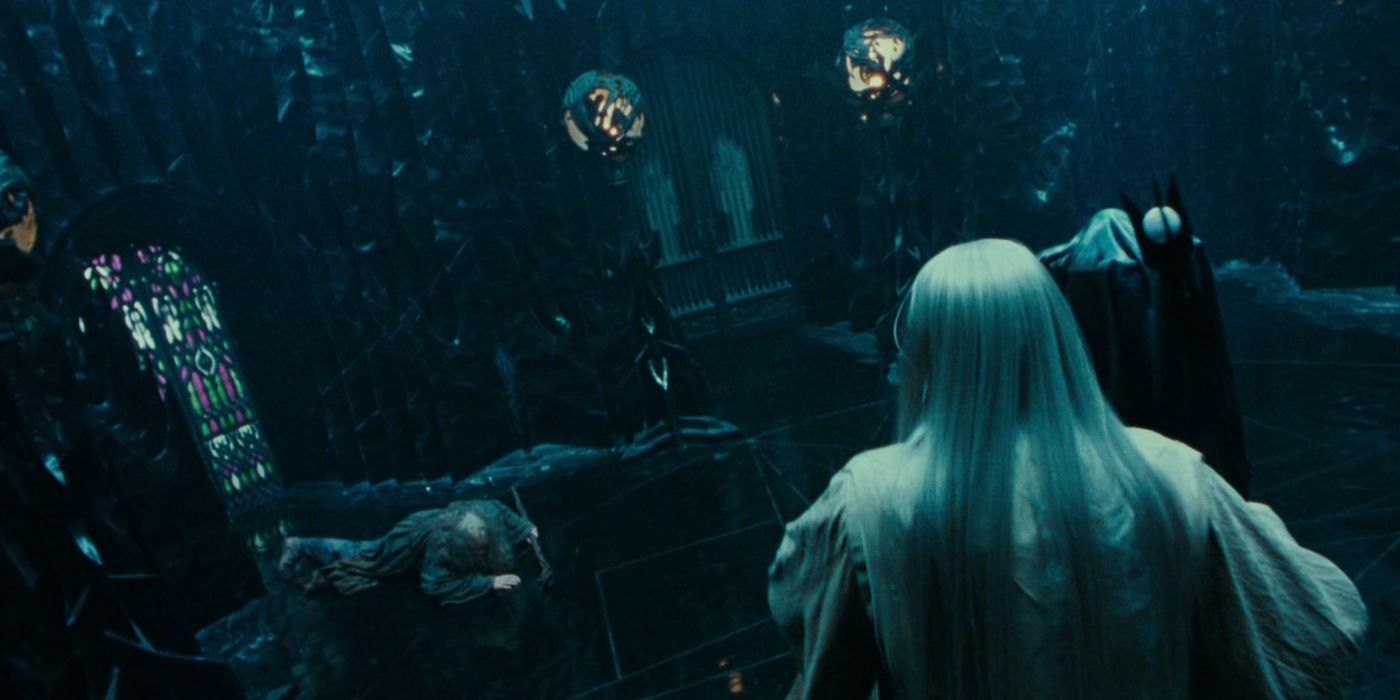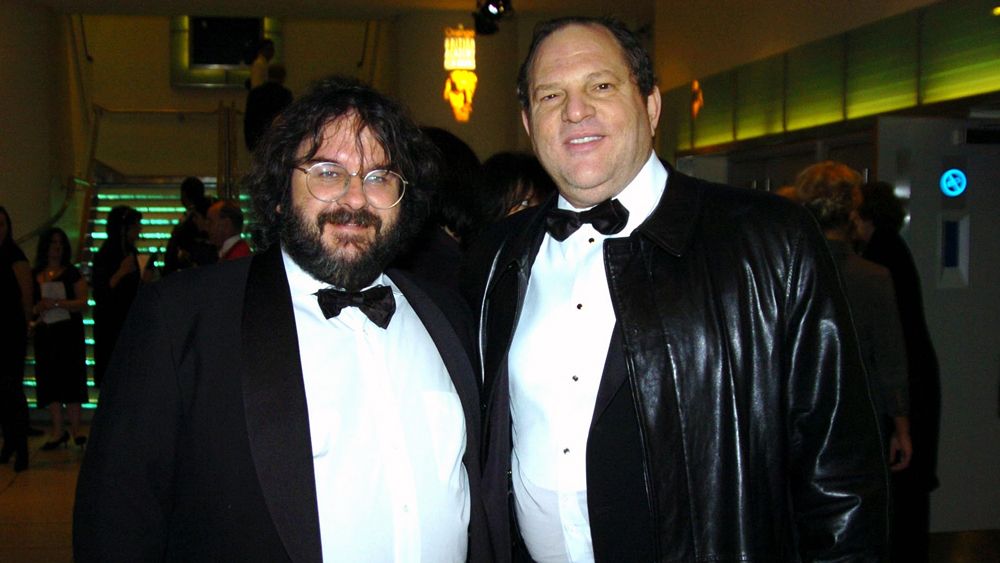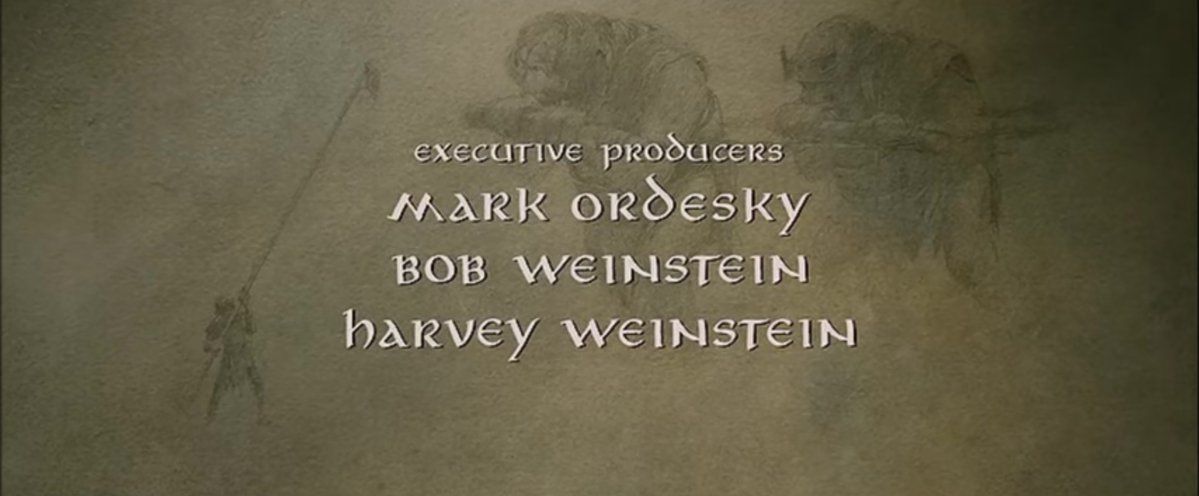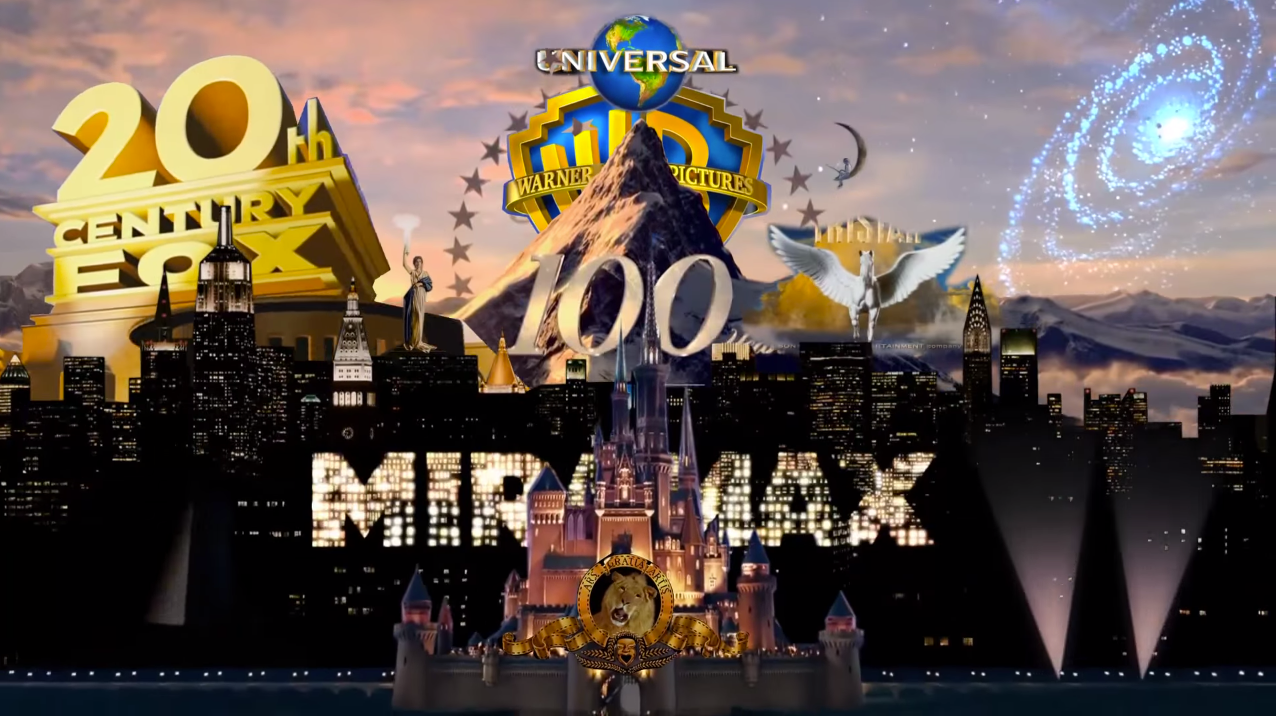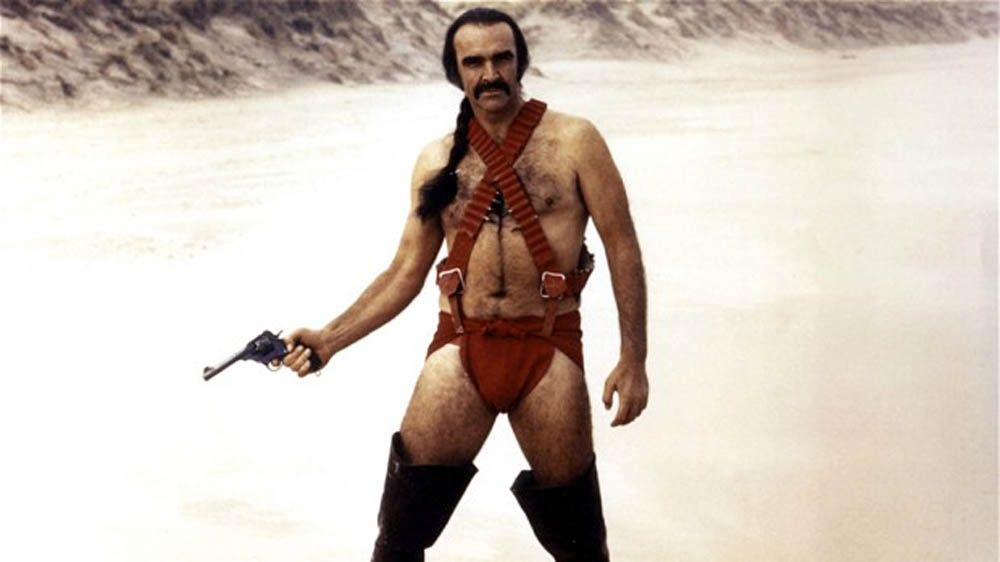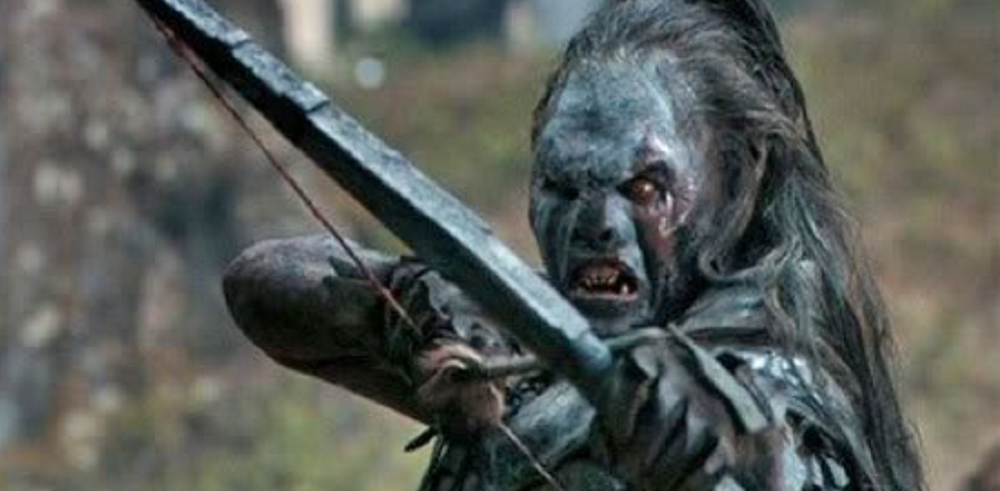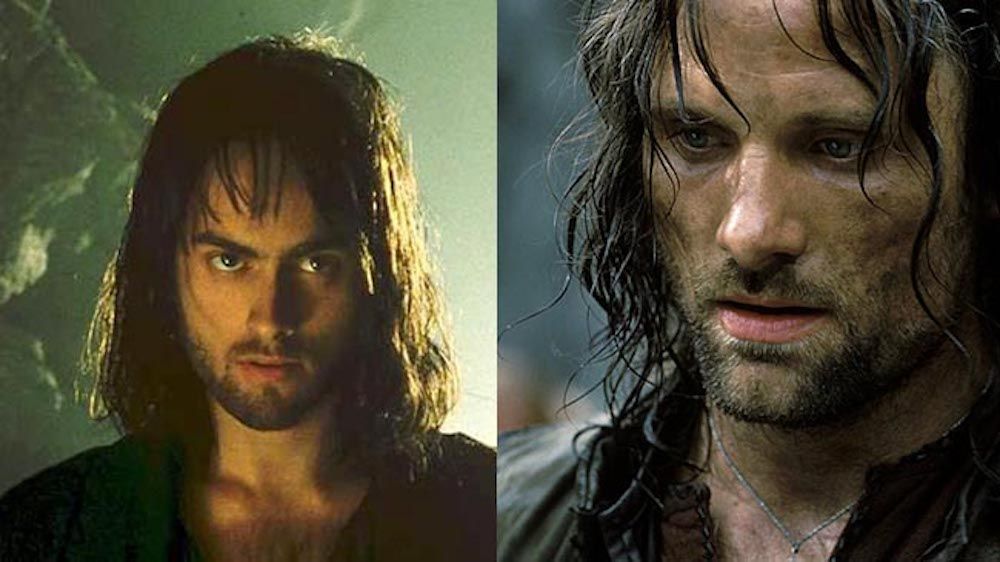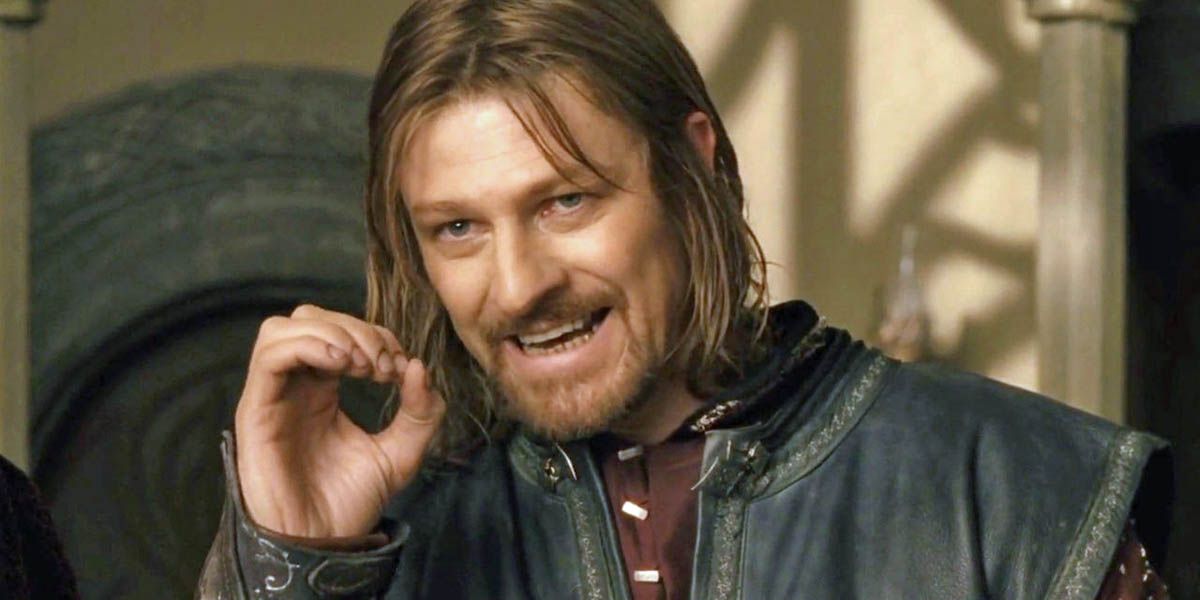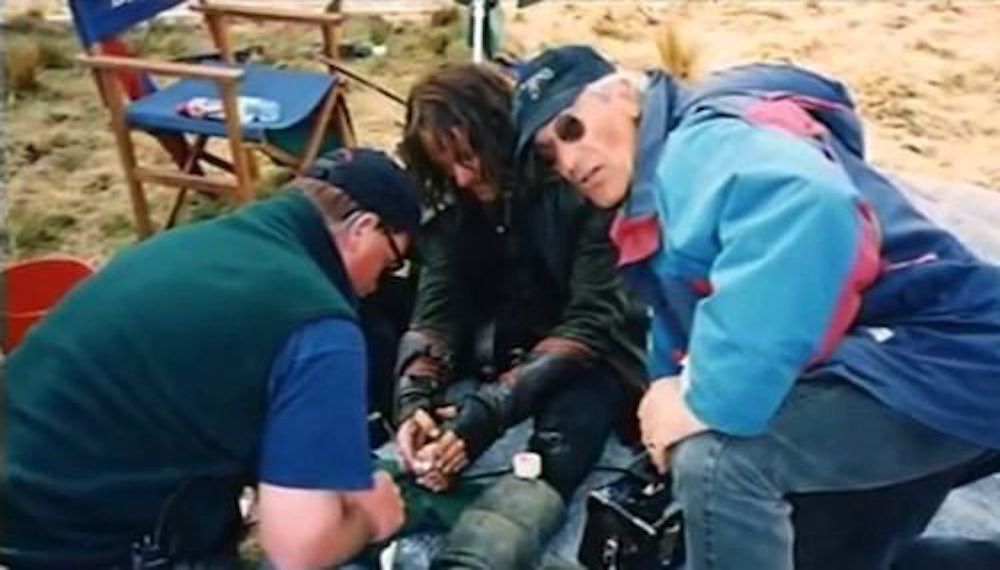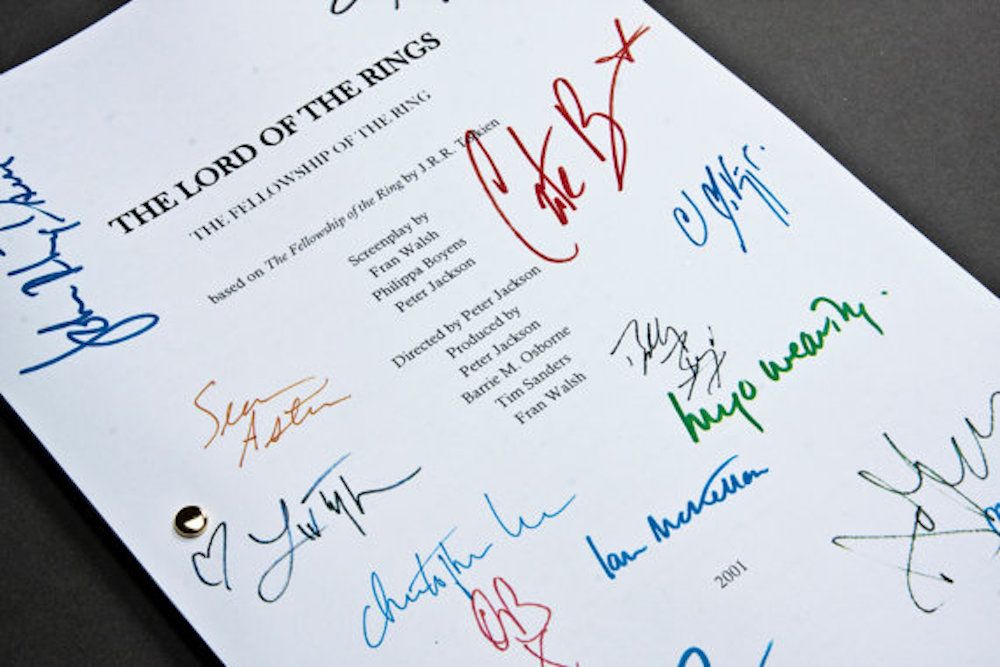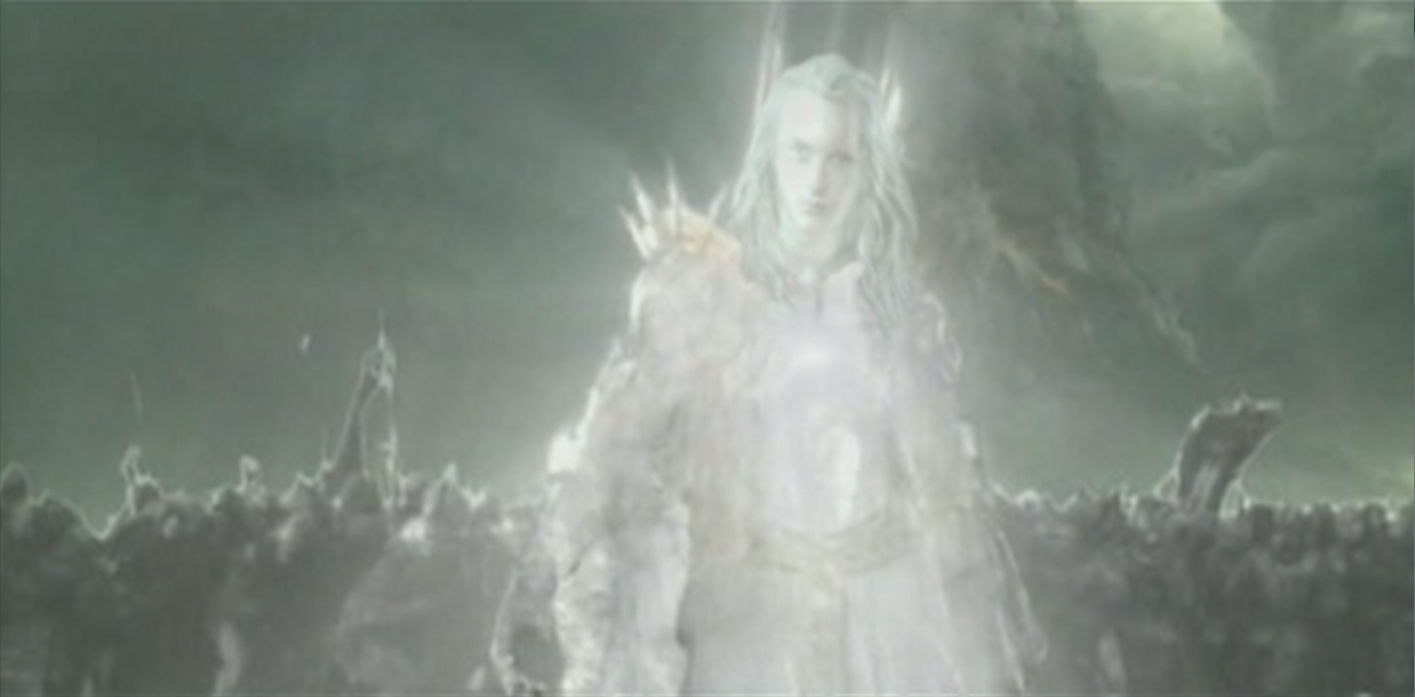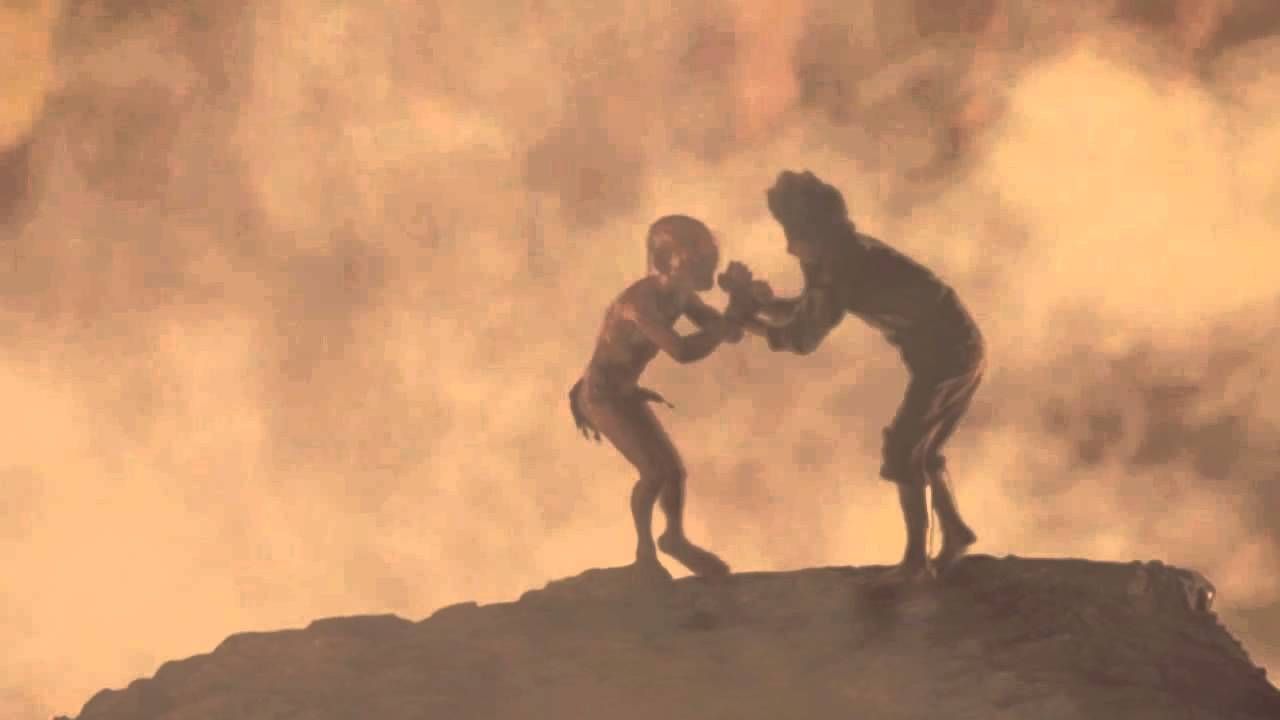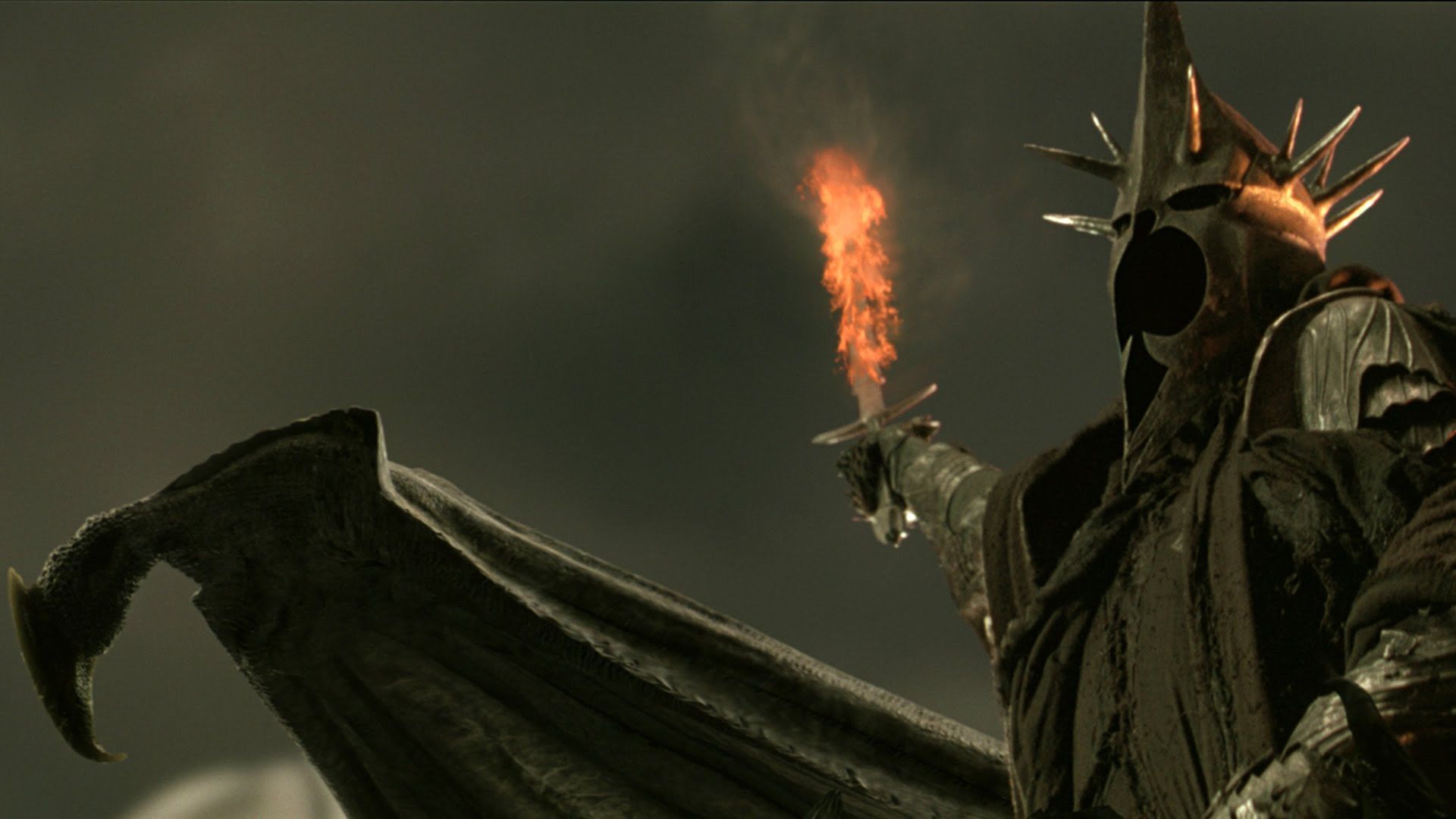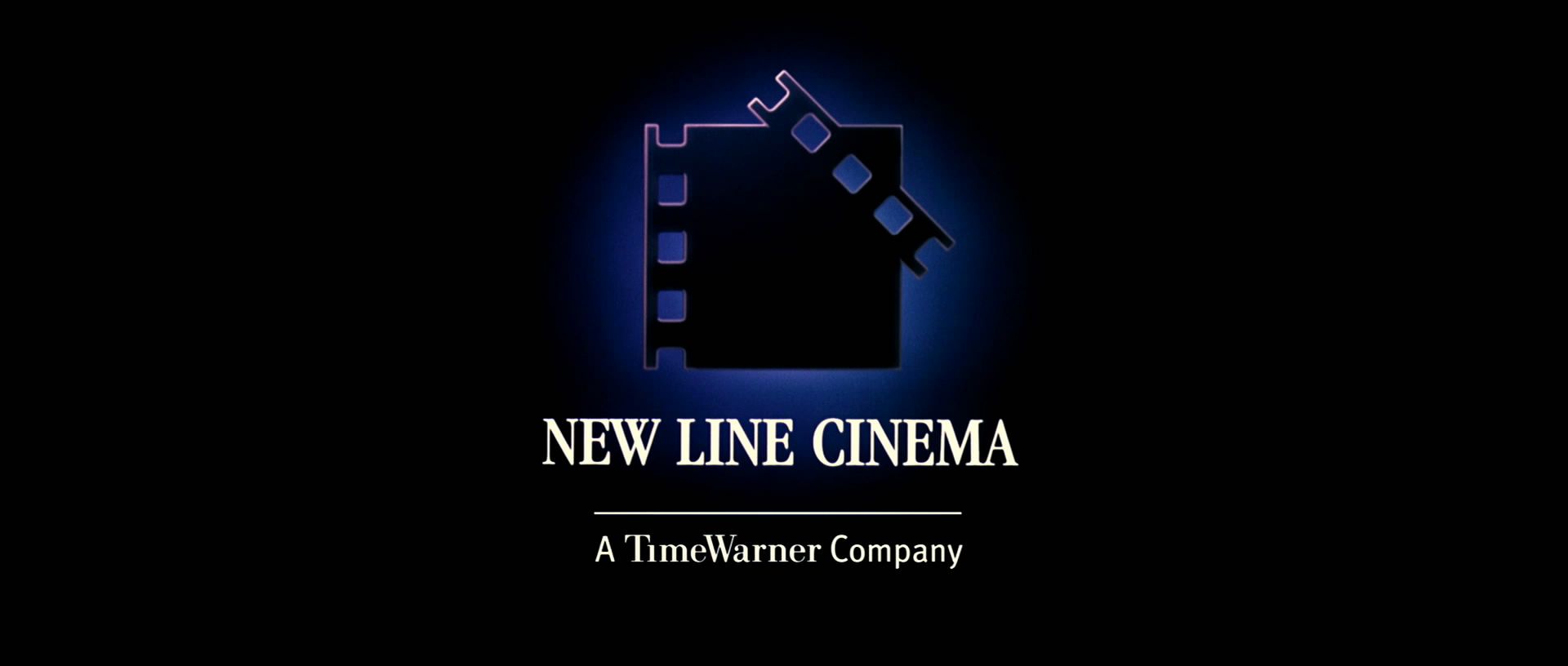These days, people almost take for granted just how great Peter Jackson's The Lord of the Rings trilogy is. We're constantly innundated with so many special effects-heavy blockbuster epics that it's easy to forget just how much those movies stand out above the rest of their genre. Every element in the trilogy from the script to the acting to the set design to the effects is perfectly callibrated to tell a great story in the most entertaining and moving way possible. It's a miracle Jackson and company pulled it off as well as they did. When they tried to recapture that magic with The Hobbit trilogy, they failed, and there's reason to be skeptical about Amazon's upcoming Middle Earth series.
The quality of the trilogy was not a guarantee, and at many points during its lengthy production just barely dodged multiple turns toward disaster. Producers threatened the project, bad ideas almost went through and the massive undertaking of the shoot proved arduous and at times dangerous. The extensive bonus features on the Extended Editions go into great detail about this, but if you don't feel like sitting through hours of documentary footage, this list highlights 15 of the films' biggest production problems.
15 WAS GOING TO BE JUST TWO MOVIES
When Peter Jackson and Fran Walsh pitched their treatment for a Tolkien adaptation to Miramax, the original plan was one movie based on The Hobbit and two movies based on The Lord of the Rings. United Artists retained the rights to The Hobbit, so they decided to skip that and just write two LOTR films. There was some precedent to this idea to condense the book trilogy into two movies; that was how Ralph Bakshi plotted his animated adaptation.
Of course, there's a reason Bakshi never made his second part. Condensing that much plot into such a short timeframe does not lend itself to the best quality of adaptation, so it's a relief that when the production moved to New Line, they decided to make a trilogy. Ironically Peter Jackson's later Hobbit adaptation would have the opposite problem of stretching one short book to a drawn-out trilogy.
14 SARUMAN WAS GOING TO BE REDEEMED
Of the many changes made adapting the books, the most controversial, give or take a Tom Bombadil, was removing "The Scouring of the Shire." While that chapter in the book, in which Saruman is controlling the Shire after Sauron's defeat, makes a pointed statement about how wartime victories don't just make problems disappear, it wasn't going to work in a film that already has too many endings. Saruman's fate was cut in the theatrical edition of Return of the King, altered in the Extended Edition. But it could have been so much worse.
In the original two movie plan, not only did Saruman die before the second movie, he got a redemption arc. Seriously. That is certainly not the Saruman of the books and not the Saruman we eventually got onscreen. Could it have worked as its own story? Maybe, but the Tolkein purists would have been furious.
13 HARVEY WEINSTEIN BLACKLISTED ACTRESSES
This is a fact you won't learn from watching the DVD bonus features, but made in the news in December 2017. Back when LOTR was going to be a Miramax production, Peter Jackson and Fran Walsh were interested in casting Ashley Judd and Mira Sorvino in the movies, likely as Arwen or Galadriel. Judd was even shown costumes and storyboards. Both actresses, however, ended up blacklisted.
This was because Miramax was the Weinstein brothers' studio. Harvey Weinstein assaulted both actresses and wanted to hurt their careers. Jackson said, "I recall Miramax telling us they were a nightmare to work with and we should avoid them at all costs." He didn't know of Weinstein's crimes at the time, but found him terrible to work with, describing the brothers as acting like "second-rate mafia bullies."
12 BOB WEINSTEIN WANTED TO CUT IT DOWN TO ONE MOVIE
Even before Harvey Weinstein's numerous crimes were exposed to the public, the Weinsteins were notably despised by many filmmakers for their need to get their hands on everything and cut projects to smithereens. It was Bob Weinstein who demanded, as a budget-saving measure, to smush the already compressed two film script into a single movie.
Bob Weinstein's suggestions involved such terrible ideas as cutting Bree and the Battle of Helm's Deep, making Éowyn Boromir's sister, removing Saruman entirely and killing off a Hobbit (he didn't care which one). Peter Jackson refused to go along with these ideas and took the project away from Miramax. It's probably no coincidence that the Weinsteins' obligatory executive producer credits on the film appear over a drawing of two cave trolls.
11 ALL THE MAJOR STUDIOS TURNED IT DOWN
After departing from Miramax, Peter Jackson made a 35 minute pitch reel to try to sell the project around Hollywood. None of the major Hollywood studios, however, even bothered watching it. Big budget high fantasy just wasn't a thing they were interested in making in the '90s. Tolkien's books might be classics, but their popularity was rather low-key at the time and the undertaking of adapting them was a huge gamble.
Only two smaller studios gave it a look: the British company PolyGram Filmed Entertainment and New Line Cinema, an independent studio recently purchased by Time-Warner. New Line's CEO Bob Shaye watched the pitch video and had only one question: why make only two films when they could make a trilogy? New Line bought the rights and production could finally commence.
10 SEAN CONNERY WAS FIRST CHOICE FOR GANDALF
Yes, THAT Sean Connery. The former James Bond was offered the role of Gandalf. He rejected it because he couldn't follow the plot. "I never understood it," Connery said. "I read the book, I read the script. I saw the movie. I still don't understand it." So LOTR was too confusing but Zardoz was fine. Got it. Connery also turned down the role of Morpheus in The Matrix around the same time. When both movies became blockbusters, he decided to cash in on the fantasy trend by acting in... The League of Extraordinary Gentlemen. Oops.
Christopher Lee wanted to play Gandalf but couldn't physically handle all the stunt work (he'd play Saruman instead). Ian McKellen almost didn't take the part because the shooting schedule lined up too close to X-Men, but fortunately they adjusted the schedule so he could do it.
9 THERE WERE GOING TO BE A LOT MORE ORC ATTACKS
One of the big challenges in adapting the LOTR books to the big screen is how relaxed their pace is despite their huge stakes. Fight scenes get passed over in a couple pages while descriptions of the grass in the Shire can go on forever. The screenwriters were smart to increase tension and emphasize action in their adaptation, but sometimes the attempts to add more action could get lazy. Usually, that meant adding more orc attacks.
In Fellowship of the Ring, multiple orc attacks in the script were filmed but ultimately got cut for being excessive. These include an attack on the Fellowship on the way to Lothlórien and one on Frodo and Sam at the very end of the film. One particularly bad idea cut from The Two Towers involved cutting away from the Battle of Helm's Deep for Éowyn to fight orcs while delivering a baby!
8 ORIGINAL ARAGORN FIRED
Viggo Mortensen was pretty much perfect as Aragorn, wasn't he? In some ways his portrayal is more complex and interesting than Tolkein's characterization in the books. There's a reason Empire magazine declared Aragorn the 15th greatest movie character of all time. However, this classic performance almost didn't happen. A different actor was initially cast as Aragorn.
Stuart Townsend rehearsed and trained for the part in New Zealand for two months. Different sources disagree on when exactly he was fired, but it was some time between one day before filming began and four days into the shoot. Peter Jackson fired Townsend because he decided that the actor seemed too young for the role. Russell Crowe and Jason Patric were Jackson's back-up options if Viggo Mortensen declined the part.
7 SEAN BEAN REFUSED TO TAKE HELICOPTERS
In the most memed scene of The Fellowship of the Ring, Boromir says, "One does not simply walk into Mordor." Boromir's actor, Sean Bean, would disagree. Sean Bean regularly walked on foot to remote shooting locations. Bean, it turns out, is deathly afraid of helicopters. After one particularly rough ride (supposedly Billy Boyd and Dominic Monaghan intentionally told the pilot to do all the craziest moves possible), Bean refused to continue taking helicopters.
Bean had to hike up mountains in full costume and make-up (there were no changing stations at these shooting locations) just to avoid flying. The rest of the actors would wait hours for him to arrive on location. Seems pretty extreme, but perhaps playing characters who die all the time gives you extra anxiety issues, in which case Sean Bean's odd travel methods are perfectly understandable.
6 MULTIPLE ACTORS INJURED
The LOTR movies required a lot of intense stunts, much of which the actors performed themselves. During the intense shoot, many of the actors got hurt. Sean Astin accidentally cut his foot stepping on glass one day during the shoot; he was back and ready within 24 hours. Orlando Bloom fell off a horse. John Rhys Davies nearly drowned when a canoe flipped over. Even Andy Serkis hurt his back doing motion capture.
The one who survived the most, though, was Viggo Mortensen. He broke two toes kicking an orc's helmet, chipped a tooth in a battle scene and almost drowned. Even when he wasn't on set, he was getting hurt! When he tried surfing for the first time on a day off, the board hit him in the face. He's shot in profile so often in the movie because they had to hide his black eye!
5 THE SCRIPT WAS REWRITTEN ALMOST DAILY
Any great screenplay goes through extensive rewrites. Still, the work Peter Jackson, Fran Walsh, Philippa Boyens and (on The Two Towers) Stephen Sinclair put into revising the script goes far beyond what most screenwriters end up doing. The writing team kept rewriting the scripts throughout the course of the entire film shoot and even into the post-production editing process.
Jackson notably views his first drafts as essentially blueprints, flexible enough to change around as production calls for it. Given just how big a challenge adapting Tolkien's trilogy properly was, it's a good thing he had that flexibility. If the writers stopped doing their revisions even just one draft before the movies were finished, those movies might not have turned out as great as they did.
4 ARAGORN WAS GOING TO FIGHT SAURON
Most of the deleted scenes filmed for the trilogy eventually got completed and made their way into the lengthy Extended Editions. One notable deleted scene, however, only exists in an incomplete form as a bonus feature. This scene is a fight between Aragorn and a physical manifestation of the Dark Lord Sauron himself at the climactic Battle of the Black Gate in Return of the King.
This scene doesn't appear in the books. It was intended to give Aragorn a big dramatic moment paralleling the fight between Sauron and Isildur in Fellowship of the Ring. Ultimately, however, the scene was too big a departure from the source material and felt wrong. Ultimately they removed Sauron with CGI and made Aragorn battle a giant cave troll instead.
3 FRODO WAS GOING TO KILL GOLLUM
In Return of the King, Gollum dies falling into the fires of Mount Doom at the edge of the cliff when fighting with Frodo over the One Ring. As portrayed in the movie, maybe you could blame Frodo for manslaughter. In earlier versions of the screenplay, however, you could raise that to flat-out murder.
Rather than tripping him in an accident, Frodo was going to push Gollum off the ledge. In the book Peter Jackson, A Filmmaker's Journey, the director says, "At the time we were OK with it because we felt everyone wanted Frodo to kill Gollum. But, of course, it was very un-Tolkien, because it flew in the face of everything that he wanted his heroes to be." Indeed, flat-out murdering Gollum would undermine the whole theme that Bilbo's mercy towards Gollum ultimately allowed for the Ring's destruction.
2 THE SECOND AND THIRD FILMS REQUIRED EXTENSIVE RESHOOTS
Shooting all three films at once was an ambitious plan that didn't entirely work. Viggo Mortensen says that, when the initial shoot ended, "the second and third ones were a mess. It was very sloppy – it just wasn’t done at all." He suspects that had the first film disappointed at the box office, the second two would end up mediocre straight-to-video affairs. Fortunately, the success of Fellowship of the Ring convinced New Line to pay for extensive reshoots.
The reshoots allowed for many additions to the films. Some were visual, redesigning the Witch King and adding new orcs, while others were expanded the emotional impact. Faramir's flashback in The Two Towers' Extended Edition was part of the reshoots, as was Théoden's final scene in Return of the King. Sean Astin made a documentary, The Long and Short of It, during the Two Towers reshoots.
1 WOULD HAVE DESTROYED NEW LINE IF IT BOMBED
New Line Cinema's fate was in doubt when it produced the LOTR movies. The studio was purchased by Turner in 1994. After Turner merged with Time Warner in 1996, New Line needed to justify its existence. Time Warner also owns Warner Bros., so what value did a second movie studio bring to the table? The studio had a mixed commercial track record, and if its LOTR gamble failed, it would be gone.
Fortunately for New Line, its gamble paid off to the tune of $2.91 billion worldwide. New Line wasn't prepared for such success; the studio got in trouble for not giving investors their share of profits they disingenuously claimed didn't exist. New Line tried to get another blockbuster trilogy going in 2007 with The Golden Compass, but that one did bomb and singlehandedly killed New Line as an independently-run studio (WB now uses the New Line logo on certain projects).

